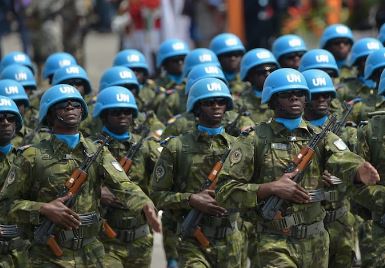Mali: MINUSMA’s effectiveness in terms of stabilization and the protection of civilians

Many reports have highlighted the relatively successful peace operation of MINUSMA until 2016, improving stability in northern Mali, decreasing the number of civilians killed in the conflict, and allowing large numbers of displaced persons to return home. From 2016 onward, however, MINUSMA’s effectiveness in terms of stabilization and the protection of civilians decreased.
The violent insurrection by separatist rebels seeking to take control of the north of the country and a subsequent military-led coup led to the deployment of the UN Multidimensional Integrated Stabilization Mission in Mali (MINUSMA) in 2013. The mission included more than 15000 troops and personnel who served in cities and towns around the country, supporting a political transition and protecting civilians, with subsequent impacts on the lives of many civilians. Throughout almost ten years of operation, MINUSMA tried to help Mali in dealing with several challenges, suffering more than 300 fatalities of its troops and personnel and over 700 injuries in the midst of extremist violence and widespread insecurity across much of the north and center of the country. The mission operated in some of the most dreadful conditions, where increased violence due to jihadist attacks led to an extraordinary number of fatalities compared to other recent UN peace operations.
Among its main operations, MINUSMA supported the political process and carried out several security-related stabilization tasks, primarily focusing on major population centers, civilian protection, human rights monitoring, establishment of conditions for humanitarian assistance and the return of displaced persons, and finally preparing free, inclusive and peaceful elections. MINUSMA also played a key role in supporting the peace process while using all necessary means to ensure the protection of civilians under imminent threat of physical violence and protection of UN personnel from residual threats, within its capabilities and its areas of deployment. A relevant contribution of the mission was reflected in its support from disarmament efforts, through which nearly 300 former combatants joined the demobilization and reintegration process. MINUSMA also supported the return to constitutional order while ensuring the provision of technical and logistical support for elections.
Many reports have highlighted the relatively successful peace operation of MINUSMA until 2016, improving stability in northern Mali, decreasing the number of civilians killed in the conflict, and allowing large numbers of displaced persons to return home. From 2016 onward, however, MINUSMA’s effectiveness in terms of stabilization and the protection of civilians decreased. Violence increased as jihadist groups continued attacking MINUSMA, the Forces Armées Maliennes, and the Algiers Agreement signatories, leasing o an extraordinary number of fatalities for MINUSMA compared to other recent UN peace operations.
The combination of the deteriorating threat environment and the limited capabilities of the mission meant that up to 80% of the force’s time and energy was allocated to protecting personnel and sustainment, rather than implementing the mission’s mandate to protect civilians. Efforts by MINUSMA to protect civilians were enabled but also compromised by the activities of parallel counterterrorism operations which operated alongside the mission, with different aims, objectives, funding mechanisms, and levels of oversight by the Security Council, with no clear strategic vision as to how they contributed to efforts to protect civilians in Mali. The mission needed time to succeed, but this was also valuable time that Mali did not have, as civilians were dying in attacks, and major mission funders like the United States were losing interest in supporting a costly UN peace operation unable to deliver quick results.
However, although the mission’s effectiveness decreased to some extent from 2016, particularly concerning stabilization and the protection of civilians, there is consensus that the security situation in Mali, and perhaps even the broader Sahel region, would likely deteriorate significantly without MINUSMA. Even though the large-scale presence of MINUSMA in northern Mali may not seem necessary at the moment, the need for continuous political and military support to the peace process is an undeniable fact. The stability of the whole Sahel region might be adversely affected without the mission’s confidence-building presence, with possible disastrous consequences for most parts of the country, particularly the north.
Finally, the serious need for the protection of civilians in the central regions should not be underestimated, which would not be realized unless additional resources are allocated to enhance the mission’s outreach and representation and ensure stability to some extent. Obviously, Missions like MINUSMA, which seek to support the long-term process of protection and peacekeeping cannot continue without sufficient resources.
References
https://news.un.org/en/story/2023/12/1145207
https://news.un.org/en/gallery/1145202
https://effectivepeaceops.net/publication/minusma/
https://reliefweb.int/report/mali/un-peace-operation-mali-troubled-yet-needed-mission
https://reliefweb.int/report/mali/minusma-and-protection-civilians-implications-future-peacekeeping-missions

